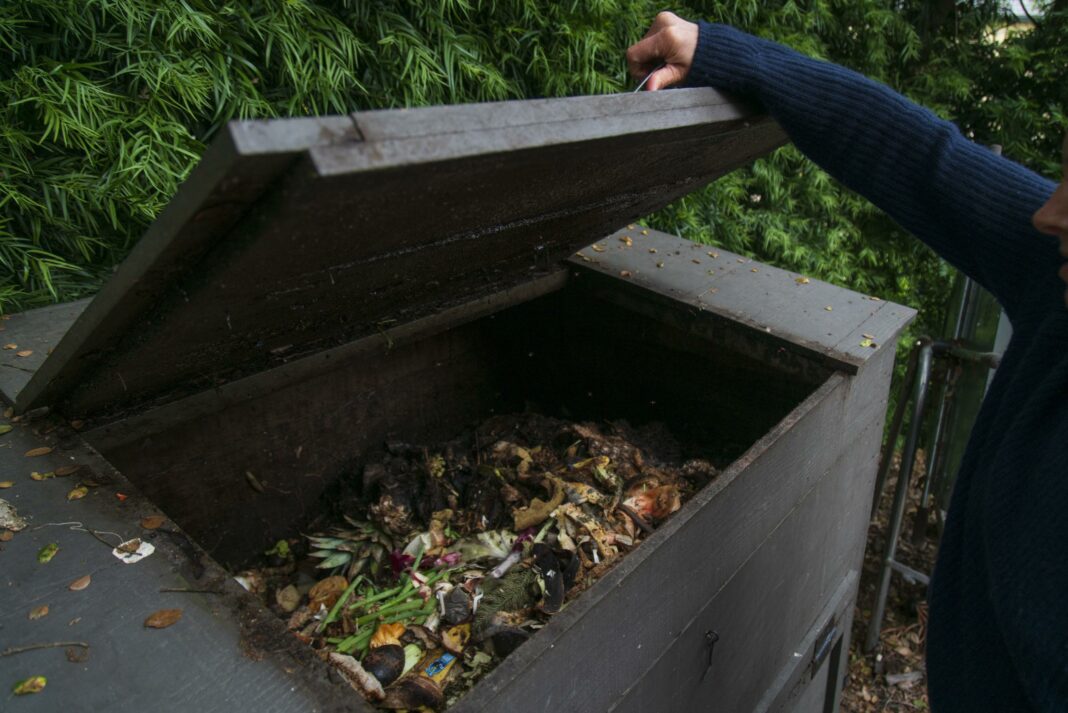Worms are definitely the way to go for easy composting.
Five years after moving to San Francisco, I remember staring at a tiny white trash can with a friendly, green perforated top. “What is this for?” my husband and I asked ourselves. Composting, of course! It was 2009, and the city was rolling out its mandatory composting and recycling program. It was composting for dummies; dump your food waste – no bones! – into the tiny white trash can, empty into the city-provided big bins, and voila! Your compost disappears. Thanks to San Francisco, my husband and I composted for a decade before we really learned how to compost.
Our First Foray Into Backyard Composting
In 2018, we had recently moved to Santa Barbara. We are plant-based, drive electric cars, have a meaningful solar array on our home, carry reusable bottles and bags with us everywhere we go, and so of course, we had to compost in our new home. We did some research and settled on a large steel tumbler.
At first it went well. We bought a large capacity tumbler and set it up outside in our garden, a short walk from the kitchen. After meals, we’d carry our food scraps out and empty them into our shiny new tumbler, give it a whirl, and move on. But after several weeks of this, the contents of our tumbler were clearly rancid; more maggots than pleasant musty smells. And then it just got so heavy! I am small but strong, yet in the end, I had to literally hang from the handle to get the tumbler to tumble.
Thanks to San Francisco, my husband and I composted for a decade before we really learned how to compost.
We officially made every mistake in the book. We filled our tumbler with food scraps and wondered why it was a soggy, putrid mess. We learned the hard way that tumbler-style composting requires a specific ratio of green and brown material (i.e., dried leaves, shredded paper, etc.), not just food scraps. Fill it with too much food – or any citrus! – and no actual composting happens. We ended up buying a second tumbler to rebalance our first. And while we finally got it figured out, it was nearly two years before we had our first completed batch of compost. It was never easy and always gross. We all started dreading taking out the compost. There had to be a better way.
Cleaning Up the Compost With Worms
We recalled the vermiculture system used in the documentary The Biggest Little Farm and decided to give it a try. Vermiculture is using worms as the engine room in your compost bin to break down food scraps and turn them into organic matter. Said more simply, the worms eat your food waste and poop out castings, which are little bits of nutrient-rich organic matter, or soil. And as we learned, you never even have to see the worms!
We started with a small, five-tray contraption I bought on Etsy. As a family of five, we filled it in less than a week. Whoops! Needing something much larger, we downloaded a simple plan for a large wooden worm bin and asked our handyman to make it. The initial setup required buying several hundred worms and lining the bin with wet cardboard. But that was it!
It was nearly two years before we had our first completed batch of compost. It was never easy and always gross. We all started dreading taking out the compost. There had to be a better way.
We started tossing in our food scraps after every meal and we’ve never looked back. The bin is easy to open, never smells or looks gross, and I’ve yet to see a worm. Balancing requires tossing in a few wet pieces of cardboard a few times a year, but there is no temperature to measure or mixing to be done. We simply dump in our food scraps, and the worms do the rest. Our worms produce enough castings to fertilize our garden several times a year, so now we have a closed loop system. We plant, grow, harvest, eat, compost, and fertilize — all from the same land. Worms are awesome.
Unless you live in a pro-compost city like San Francisco that will do all the work for you, worms are definitely the way to go for easy, non-gross composting. I’m not sure I’d keep a worm composter inside my home, but many compact back-porch-style vermiculture setups are available online. It may take time to find the right size system for your needs, but so long as you keep your worms dry – they can drown in the rain! – and fed, they will take care of business.
Getting Started With Vermicomposting
Here are step-by-step instructions on how to build a vermicompost bin and for in the kitchen, we have found a heavy duty colander with a handle that lives in the sink to be the ideal way to stage food scraps. Wet items strain through the colander, transporting to the compost bin is easy and the handle keeps your hands clean, and it’s convenient to clean out.


